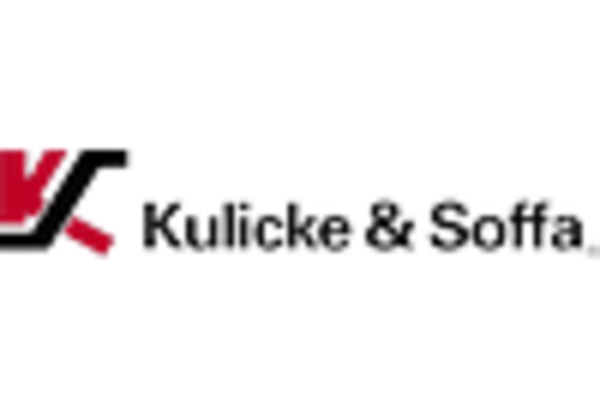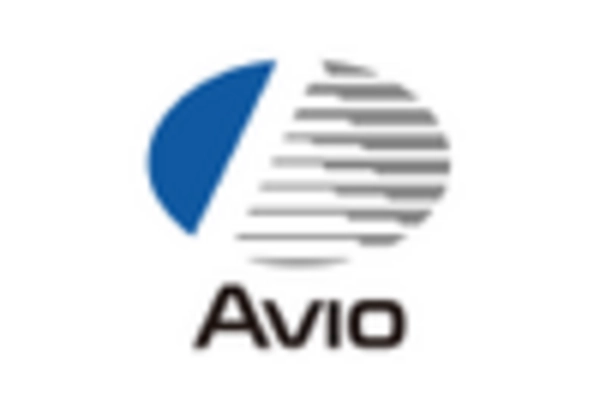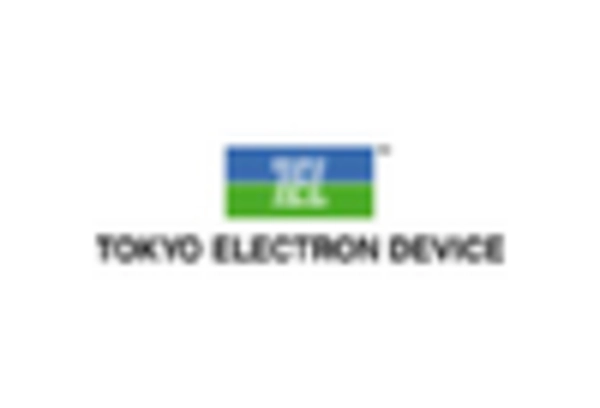Increasing Adoption of IoT Devices
The increasing adoption of Internet of Things (IoT) devices significantly impacts the Global Semiconductor Bonding Market Industry. As more devices become interconnected, the demand for efficient and reliable semiconductor bonding solutions escalates. IoT applications span various sectors, including healthcare, smart homes, and industrial automation, all of which require advanced semiconductor technologies. The need for miniaturization and enhanced performance in these devices drives innovation in bonding techniques. Consequently, the Global Semiconductor Bonding Market Industry is likely to experience sustained growth as manufacturers adapt to the evolving landscape of IoT technology.
Expansion of Automotive Electronics
The expansion of automotive electronics serves as a significant driver for the Global Semiconductor Bonding Market Industry. As vehicles become increasingly equipped with advanced electronic systems, the demand for reliable semiconductor bonding solutions rises. Technologies such as autonomous driving, electric vehicles, and connected car systems necessitate robust semiconductor components that can withstand harsh conditions. This trend is expected to propel the market forward, as automotive manufacturers seek to integrate sophisticated bonding techniques into their production processes. The growing emphasis on automotive electronics underscores the pivotal role of the Global Semiconductor Bonding Market Industry in supporting the evolution of the automotive sector.
Rising Demand for Advanced Electronics
The Global Semiconductor Bonding Market Industry experiences a notable surge in demand driven by the proliferation of advanced electronics. As consumer electronics become increasingly sophisticated, the need for high-performance semiconductor devices intensifies. This trend is particularly evident in sectors such as smartphones, tablets, and wearable technology, where compact and efficient bonding solutions are essential. In 2024, the market is projected to reach 0.77 USD Billion, reflecting the industry's response to these evolving consumer preferences. The integration of semiconductor bonding technologies enables manufacturers to enhance device performance and reliability, thereby supporting the overall growth of the Global Semiconductor Bonding Market Industry.
Technological Advancements in Bonding Techniques
Technological innovations in bonding techniques significantly influence the Global Semiconductor Bonding Market Industry. The introduction of advanced methods such as flip-chip bonding and micro-bump bonding enhances the efficiency and effectiveness of semiconductor assembly processes. These techniques allow for improved thermal and electrical performance, which is crucial for high-density applications. As the industry evolves, manufacturers are increasingly adopting these cutting-edge bonding technologies to meet the demands of next-generation devices. This shift is expected to contribute to the market's growth, with projections indicating an increase to 1.04 USD Billion by 2035, underscoring the importance of technological advancements in shaping the Global Semiconductor Bonding Market Industry.
Growing Investment in Semiconductor Manufacturing
The Global Semiconductor Bonding Market Industry benefits from a substantial increase in investment directed towards semiconductor manufacturing. Governments and private entities are recognizing the strategic importance of semiconductor production, leading to the establishment of new fabrication facilities and the expansion of existing ones. This influx of capital not only enhances production capabilities but also fosters innovation in bonding technologies. As a result, the market is poised for growth, with a projected compound annual growth rate (CAGR) of 2.8% from 2025 to 2035. This investment trend reflects a broader commitment to strengthening the semiconductor supply chain and ensuring the competitiveness of the Global Semiconductor Bonding Market Industry.














Leave a Comment